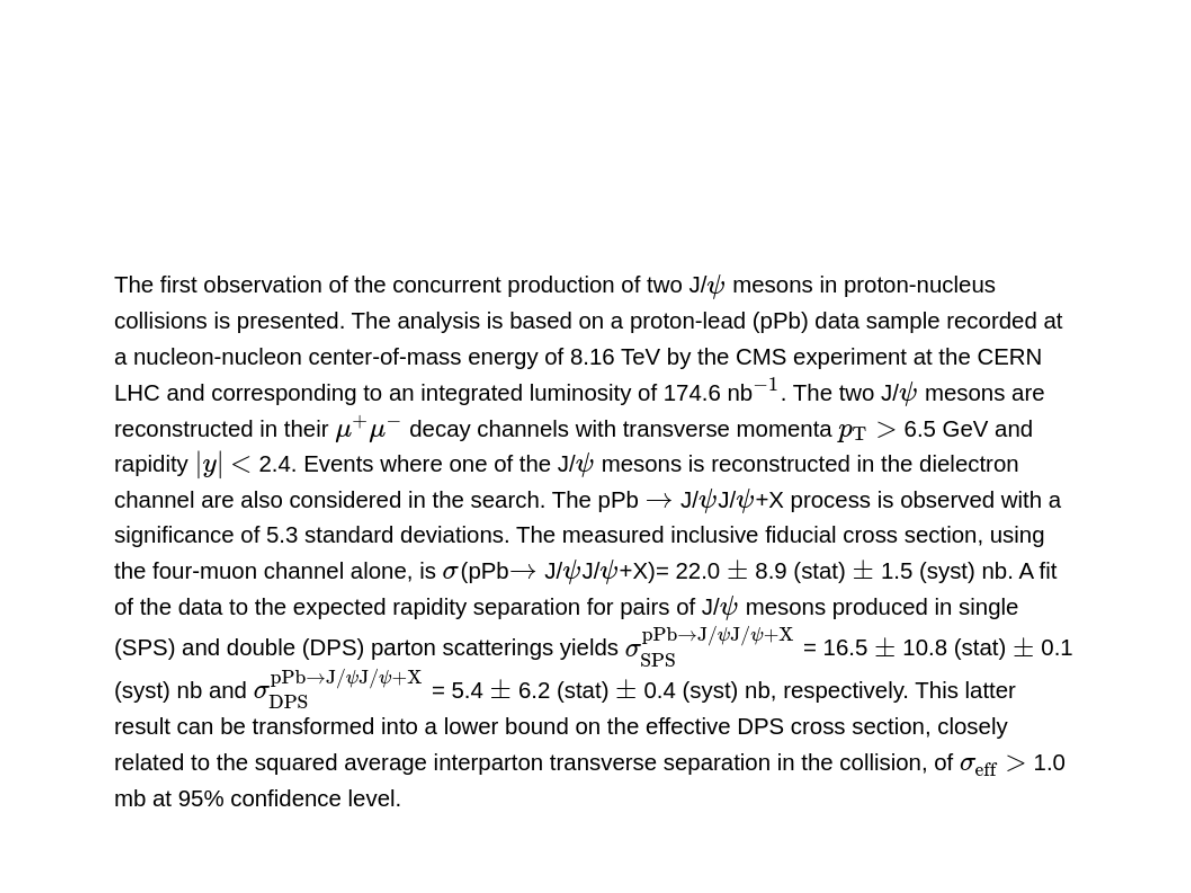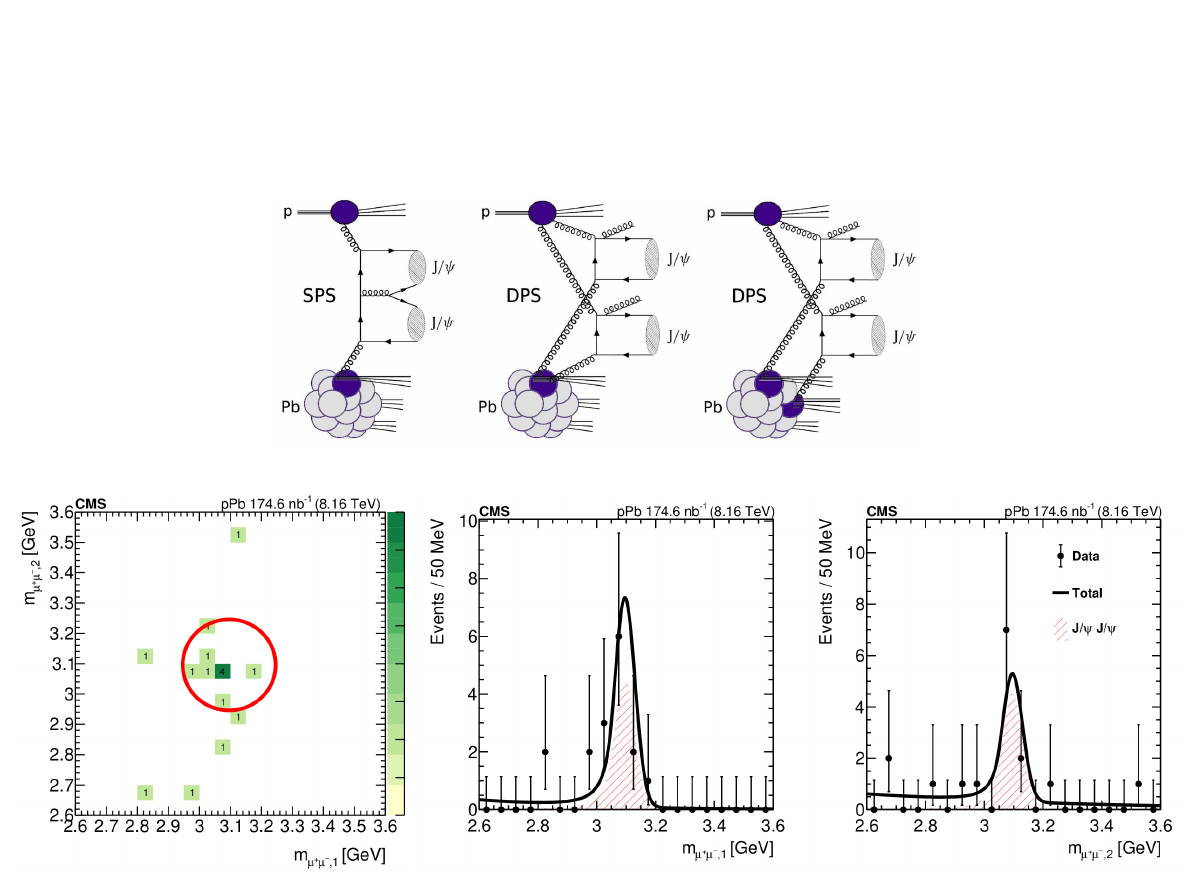
arXiv Summary
July 10
th
, 2024

arXiv Summary
July 10
th
, 2024

2
CMS(1)
CMS-HIN-23-013
Observation of double J/ψ meson production in pPb collisions at √s
NN
= 8.16 TeV

3
CMS(1)
CMS-HIN-23-013
Observation of double J/ψ meson production in pPb collisions at √s
NN
= 8.16 TeV

4
ML(1)
Exotic and physics-informed support vector machines for high energy physics
A. Ramirez-Morales et al
In this article, we explore machine learning techniques using support vector machines with
two novel approaches: exotic and physics-informed support vector machines. Exotic support
vector machines employ unconventional techniques such as genetic algorithms and boosting.
Physics-informed support vector machines integrate the physics dynamics of a given high-
energy physics process in a straightforward manner. The goal is to efficiently distinguish signal
and background events in high-energy physics collision data. To test our algorithms, we
perform computational experiments with simulated Drell-Yan events in proton-proton
collisions. Our results highlight the superiority of the physics-informed support vector
machines, emphasizing their potential in high-energy physics and promoting the inclusion of
physics information in machine learning algorithms for future research.

5
ML(2)
A unified machine learning approach for
reconstructing hadronically decaying tau leptons
Laurits Tani et al.
Tau leptons serve as an important tool for studying the production of Higgs and electroweak
bosons, both within and beyond the Standard Model of particle physics. Accurate
reconstruction and identification of hadronically decaying tau leptons is a crucial task for
current and future high energy physics experiments. Given the advances in jet tagging, we
demonstrate how tau lepton reconstruction can be decomposed into tau identification,
kinematic reconstruction, and decay mode classification in a multi-task machine learning
setup.Based on an electron-positron collision dataset with full detector simulation and
reconstruction, we show that common jet tagging architectures can be effectively used for
these subtasks. We achieve comparable momentum resolutions of 2-3% with all the tested
models, while the precision of reconstructing individual decay modes is between 80-95%. This
paper also serves as an introduction to a new publicly available Fu{\tau}ure dataset and
provides recipes for the development and training of tau reconstruction algorithms, while
allowing to study resilience to domain shifts and the use of foundation models for such tasks.

6
Other(1)
QCD Masterclass Lectures on Jet Physics and Machine Learning
Andrew J. Larkoski
These lectures were presented at the 2024 QCD Masterclass in Saint-Jacut-de-la-Mer, France.
They introduce and review fundamental theorems and principles of machine learning within
the context of collider particle physics, focused on application to jet identification and
discrimination. Numerous examples of binary discrimination in jet physics are studied in
detail, including H→bb¯ identification in fixed-order perturbation theory, generic one- versus
two-prong discrimination with parametric power counting techniques, and up versus down
quark jet classification by assuming the central limit theorem, isospin conservation, and a
convergent moment expansion of the single particle energy distribution. Quark versus gluon
jet discrimination is considered in multiple contexts, from using additive, infrared and
collinear safe observables, to using hadronic multiplicity, and to including measurements of
the jet charge. While many of the results presented here are well known, some novel results are
presented, the most prominent being a parametrized expression for the likelihood ratio of
quark versus gluon discrimination for jets on which hadronic multiplicity and jet charge are
simultaneously measured. End-of-lecture exercises are also provided.